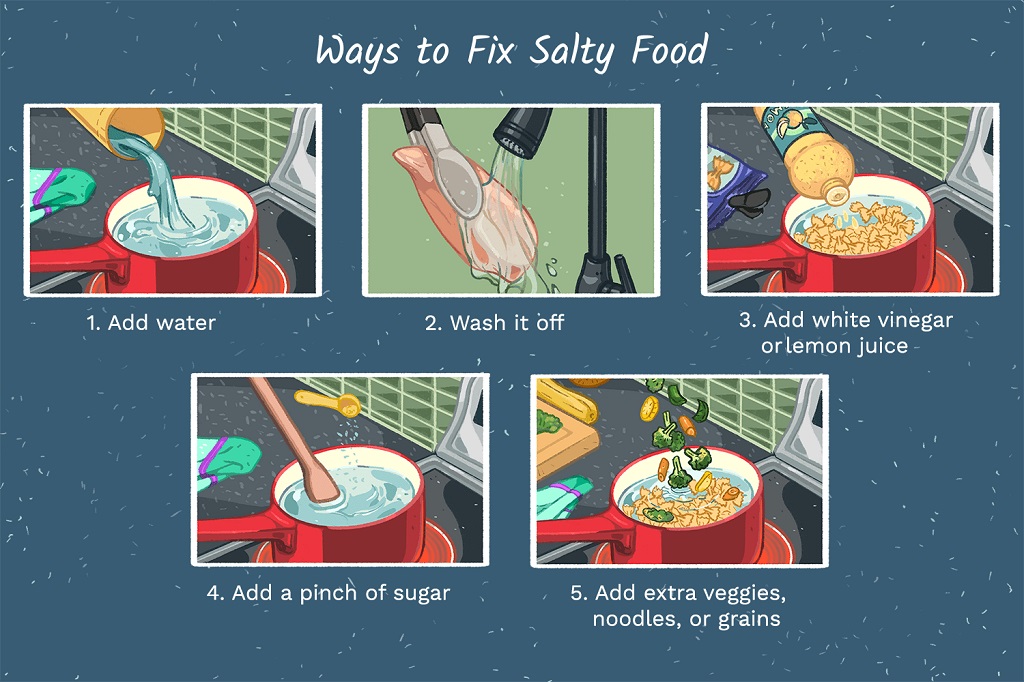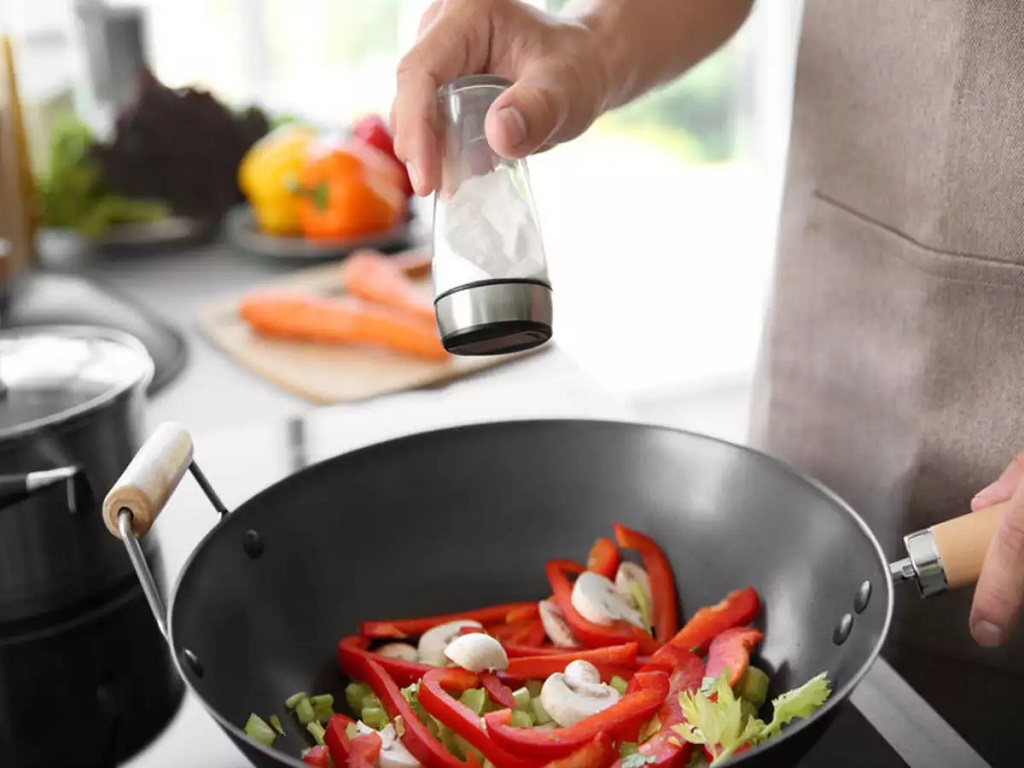
18 Feb How to remove excessive salt in food
We’ve all been there – a pinch too heavy-handed with the salt shaker, turning what should be a culinary masterpiece into a sodium overload. Whether it’s an unintentional slip of the wrist or a miscalculation in a recipe, the result is the same: an overly salty dish. But fear not! In this guide, we’ll explore effective ways to salvage your meal and, in particular, how to fix the common woe of excessively salty rice.
A Guide to Rescuing Your Dish to How to Remove Excessive Salt in Your Food

Dilution is the Solution
The most straightforward approach to combating excess salt is dilution. If your dish allows for it, add more unsalted ingredients to the mix. For soups, stews, and sauces, toss in extra vegetables, broth, or canned tomatoes to help balance out the saltiness.
Potatoes to the Rescue
Potatoes are natural salt absorbers. Throw in a few extra chunks of peeled potatoes into your salty stew or curry, and let them simmer. The potatoes will soak up the excess salt, leaving your dish more palatable.
Acidic Balance
The addition of acidity can help cut through the saltiness. Squeeze a bit of lemon juice, vinegar, or a splash of wine into your dish. The acid will counteract the salt without compromising the overall flavor.
More Grains, Please
If your rice is the salty culprit, consider how to fix salty rice by cooking an additional batch of unsalted rice and mixing it in with the salty one. This will dilute the salt content and provide a balanced flavor.
Fixing Salty Rice
- Rinse the rice thoroughly under cold water to remove surface salt.
- Cook an extra batch of unsalted rice.
- Combine the unsalted rice with the salty one, fluffing the grains to distribute the flavors evenly.
Serve with a Neutral Base
Accompany your salty main course with a neutral side, such as plain rice, pasta, or bread. This will help balance the overall taste experience and prevent the saltiness from overwhelming your palate.
Yogurt or Dairy Intervention
Dairy can be an effective counteragent to salt. Incorporate yogurt, cream, or milk into your overly salty dishes, especially in curries or creamy sauces. Dairy products not only add a creamy texture but also help mellow out the saltiness.
FAQs
How can I fix salty rice?
Answer: To fix salty rice, start by rinsing the rice thoroughly under cold water to remove surface salt. Next, cook an additional batch of unsalted rice. Finally, combine the unsalted rice with the salty one, fluffing the grains to distribute the flavors evenly.
What’s the quickest way to reduce saltiness in a dish?
The quickest method to reduce saltiness is dilution. Add more unsalted ingredients to the dish, such as vegetables, broth, or canned tomatoes, to balance out the salt. This works well for soups, stews, and sauces.
Can acidic ingredients help counteract excess salt?
Yes, acidic ingredients like lemon juice, vinegar, or wine can help cut through excess saltiness in a dish. These additions balance the flavors and provide a fresh dimension to counteract the salt, especially in sauces and marinades.
Final Thought
Mistakes happen in the kitchen, and an overly salty dish is not the end of the world. With a few strategic adjustments and some creativity, you can rescue your meal and turn it into a culinary triumph. Embark on a journey of culinary rejuvenation with THE SPA KITCHEN COOKING FOR HEALTH AND WELLNESS So, the next time you find yourself facing the challenge of excess salt, remember these tips and savor the satisfaction of transforming a culinary mishap into a delicious success.
